The content of the article
The shkatomordnik is considered to be a clear representative of the viper family. Reptiles of this variety got its name due to the presence of characteristic shields in the head. This is not to say that this species is very dangerous, but due to the toxicity of the meeting with him should be avoided. Today's material is devoted to the water representative of the family. We will study important features, nutrition, distribution and characteristics.
Description
- Individuals of this species have distinctive characteristics. Identify that in front of you is a dangerous viper, it is possible by narrowed pupils. They are arranged vertically, literally signaling with their malicious eyes about poisonousness. If the pupils are round, there is no danger, although the bite can be painful.
- As for the overall features, the reptiles are stretched out to a length of 70 cm. The tail is given another 10 cm. It is shortened and is not visible to a sufficient degree. On the body is conveniently located more than 23 rows of scales.The body format is oblate, which is especially noticeable when looking at the snake from above.
- The head is spotty, stands out from the rest of the body, since the transition to the neck is clearly visible. The muzzle in the lower section rises. There is a hole under the sockets, which makes this species even more frightening.
- This hole allows shchitomordnikam capture heat. Such a sense organ is not characteristic of some other reptiles. On the head there is a band of dark tone, so the individuals are somewhat similar to the snakes. The abdominal section is lighter than the rest of the body. The belly is gray-yellow, there are small spots.
- The back is pigmented brown or brown, stripes stand out in the form of a set of beveled lines. Shchitomordniki, painted in one color can come across. But it is a rarity.
Spread
- These individuals are not ranked in rare categories, and therefore distributed in different parts of the globe. A large number of reptiles live in China, the Far East, Korea, Mongolia, Iran.
- With regard to the choice of landscape, the water representatives of the species are not too picky in this regard.They inhabit the flooded plains and pastures, they can settle near lakes, rivers, and other water sources. They love swampy areas and desert areas.
- Some brave representatives of the species rise to a height of 3.5 km. above sea level. There are individuals in the eastern and southern parts of the United States of America.
- All shtekomordniki are similar to each other, and therefore their habitat can not be called too scattered. As far as poisonousness is concerned, when a snake is bitten, a person will not die, but it is better not to allow meetings. If the snake attacks, it will be painful and bloody.
Lifestyle
- Reptiles show aggression if they cannot retreat. Often these snakes meet travelers. It is the onlookers who are not particularly careful in unfamiliar terrain. Often, people simply do not notice the snakes under their feet and just step on them.
- Consider that such animals always shake their tails before attacking. In the wild, vipers already have enough natural enemies. Often these snakes are attacked by owls, kites, harriers, jays, hawks, white-tailed eagles and ravens.
- In addition, water shchitomordniki afraid of harz, raccoon dogs and badgers. People also did not pass by the reptiles in question.The fact is that in Eastern cuisine, snake meat is a delicacy. In addition, dried meat and poisonous individuals are in demand in pharmacology.
- The activity of these individuals strongly depends on their habitats. Most often, it manifests itself in the spring or autumn. As for the summer period, snakes are preferred to crawl out after sunset. In the northern and mountainous areas, reptiles are day-living. In the southern regions they crawl out at night.
- As soon as the early spring comes, the mating season begins for the water shtetomordnikov. What is most interesting, it continues until the fall. Along the way, reptiles settle among the foot of the slopes, rocks, in the crevices of stones and cracks of coastal cliffs.
- At the moment of potential danger, these individuals hide in rodent holes and between stones. They also try to hide in the marshland and dense thickets. Most often, such reptiles are found in abandoned buildings and cemeteries.
Water moths spend a lot of time in the aquatic environment. As for hunting, the snakes are sent to search for prey in the evening. Individuals do not fight victims, they rapidly bite them and wait for the poison to act.After this, the snake finds the prey and calmly regales.
Video: Water Shield Card (Agkistrodon piscivorus)

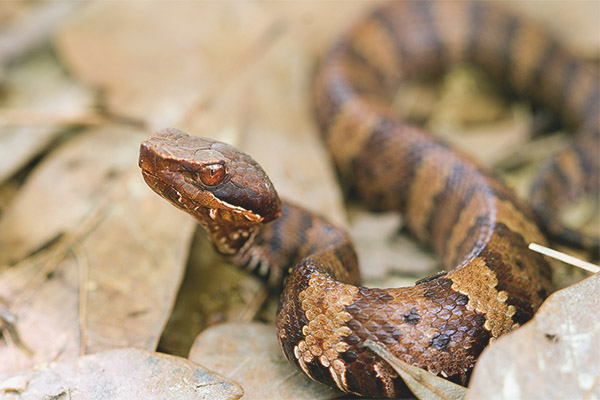


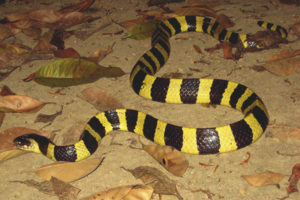

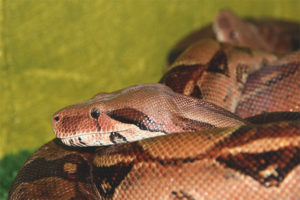
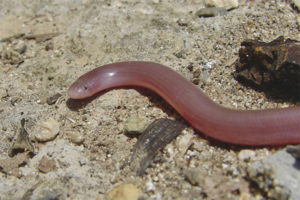
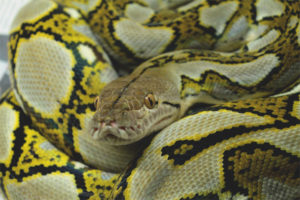
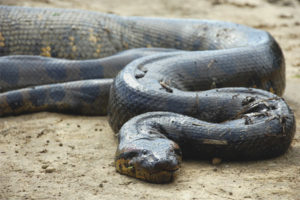
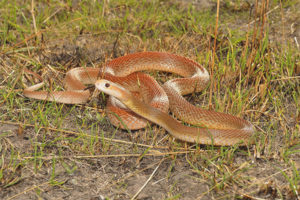
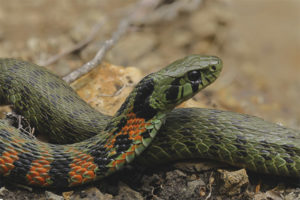
To send